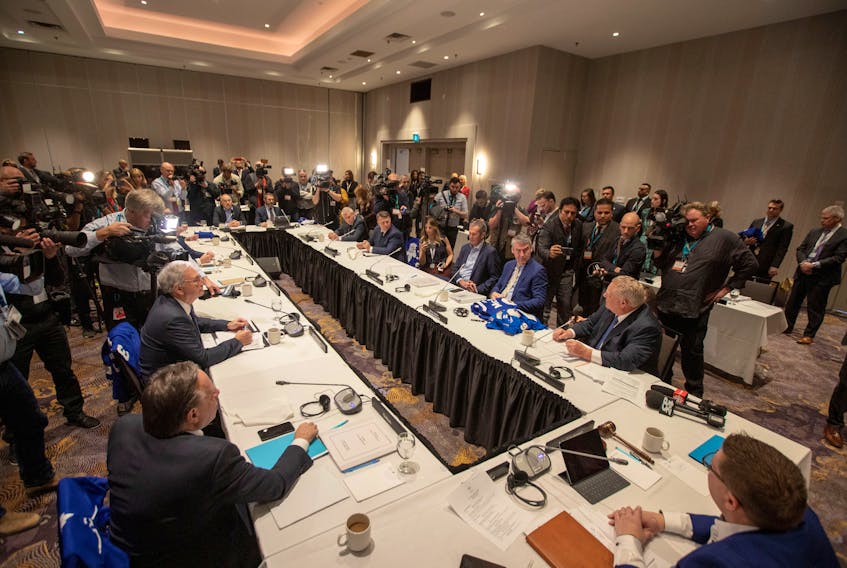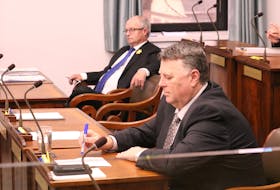
There has been considerable public debate recently regarding the need to renegotiate equalization in Canada.
Equalization has been in place since 1957 and has evolved over time. It's not particularly well understood by the average Canadian.
The formula to calculate equalization is complicated; in essence, equalization is meant to average out the fiscal capacity of poorer provinces to provide services of roughly the same standard to their residents.
This fiscal capacity relates to a province’s ability to generate revenue through various forms of taxation and is evaluated based on a province’s ability to tax at a level equal to the national average. Sales taxes, corporate taxes and personal income taxes are the main sources of revenue for provinces.
In Atlantic Canada, fiscal capacity is limited, given that the tax burden is already the highest in the country. The most recent fiscal year saw $19 billion in equalization payments ($1.9 billion to Nova Scotia and more than $400 million for P.E.I.) divided among six “have-nots,” which included the three Maritime provinces. Newfoundland and Labrador was not among them — in recent years, it’s been deemed a “have” province, despite its economic woes.
Equalization payments come in addition to other transfers from the federal government that all provinces receive for education, health and welfare (the Canada Social Transfer and the Canada Health Transfer), largely on a per capita basis (i.e., based on the number of residents in a province).
The four Atlantic Canadian provinces have long argued that health transfer payments do not take into consideration the older populations in the region. But that's another story.
To be clear, individual Canadians and corporations, not provinces, contribute to equalization payments through federal income tax and GST, at the same rates across the country. Equalization payments increase annually, for the most part.
Albertans have long complained that they pay a higher share of equalization than they should, funding about 17 per cent of overall equalization payments while having only about 11 per cent of the population in Canada, according to the Fraser Institute. This is largely the consequence of having significantly higher incomes in Alberta.
Quebec is the biggest beneficiary of equalization payments, receiving more than half the pie. Interestingly, Quebec Premier François Legault has recently derided the province’s dependency on equalization. There is some argument that dependence on equalization payments acts as a disincentive for poorer provinces to become more self-sufficient.
Ironically, Newfoundland and Labrador is now officially a “have” province. Yet the province has, by far, the most precarious fiscal situation in the country, and its wounds are largely self-inflicted. It failed to properly manage its own financial affairs over a long period of time and squandered the wealth generated by its oil and gas sector.
The province must address its fiscal challenges more aggressively. The situation is dire and it will take more than a share of equalization to solve the current structural financial difficulties — it will likely take a federal bailout.
Equalization is a constitutional right under the Canada Act of 1982. Changes were last made in 2009. In 2018, the federal government decided to postpone the renegotiation of equalization until 2023, perhaps realizing how difficult a process it would be. But it will, eventually, have to be renegotiated.
With the economic power in the country now increasingly shifting to the western provinces, it’s likely the terms of any renegotiated agreement will include conditions related to the development of natural resources, particularly energy, which is a source of wealth in this country.
At a minimum, the western provinces are likely to insist other provinces develop their natural resources in a similar manner, especially those related to shale gas. Furthermore, there will likely be a demand for a national energy corridor to provide access to markets for landlocked western oil and gas, and a revived Energy East pipeline will likely be part of such discussions.
Alberta oil is deeply discounted because it is landlocked and dependent on a U.S. market. The Fraser Institute has estimated that transportation constraints to foreign markets cost the energy industry nearly $16 billion in lost revenue in 2018.
The recent federal election (and the Alberta provincial election) underscore the deepening political divide in the country. With Alberta and Saskatchewan being largely Conservative and with the rebirth of the Bloc Québécois, regional tensions are once again on the rise. Don’t expect any attempt at renegotiating equalization during the new government’s term, which may only last 18-24 months. But the pressure to renegotiate will only increase with time.
Meanwhile, the Maritime provinces should focus on becoming less dependent upon equalization because it's likely any new deal will be less advantageous.
It's interesting to note the lack of political appetite in this part of Canada to discuss how the region can become less dependent on these equalization transfers. Only one provincial government in my memory (the Shawn Graham Liberal government in New Brunswick, which was in office a decade ago) actually set a goal to become less reliant on equalization transfers. This was generally supported by New Brunswickers based on research conducted at that time.
I believe the majority of Nova Scotians would also prefer to be less dependent on the generosity of other Canadians and become more self-reliant.
Nevertheless, equalization payments have increased significantly over time in the Maritimes. A growing population (and tax base) provides the best opportunity for the province to become less reliant on equalization going forward. At the same time, Atlantic Canadians must also better understand the concerns of western provinces — and be prepared for some difficult negotiations ahead.
Don Mills is the former owner of Corporate Research Associates and a recognized expert in data trends in Atlantic Canada. He can be contacted at [email protected] or on Twitter at @donmillshfx.
RELATED:









